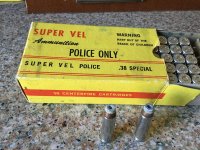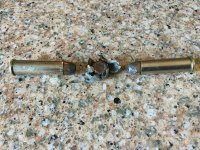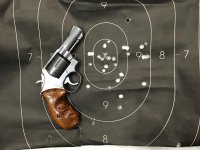Classic Radio99
Member
I use 148gr. lead target full wadcutters, not only for the ballistic effects, but because it's relatively low recoil and relatively low cost. This allows me to get lots of practice with this round, which is very important.
Although bullet performance is important, shot placement is really what matters. I don't want to have any bad shooting habits, and I want to accurately hit what I'm shooting at. Low cost, low recoil ammunition helps with that.
And the finest bullet ever made won't work if it just goes whizzing by. "I'd rather be missed by a big bullet than hit by a small one", or something to that effect.
Although bullet performance is important, shot placement is really what matters. I don't want to have any bad shooting habits, and I want to accurately hit what I'm shooting at. Low cost, low recoil ammunition helps with that.
And the finest bullet ever made won't work if it just goes whizzing by. "I'd rather be missed by a big bullet than hit by a small one", or something to that effect.




